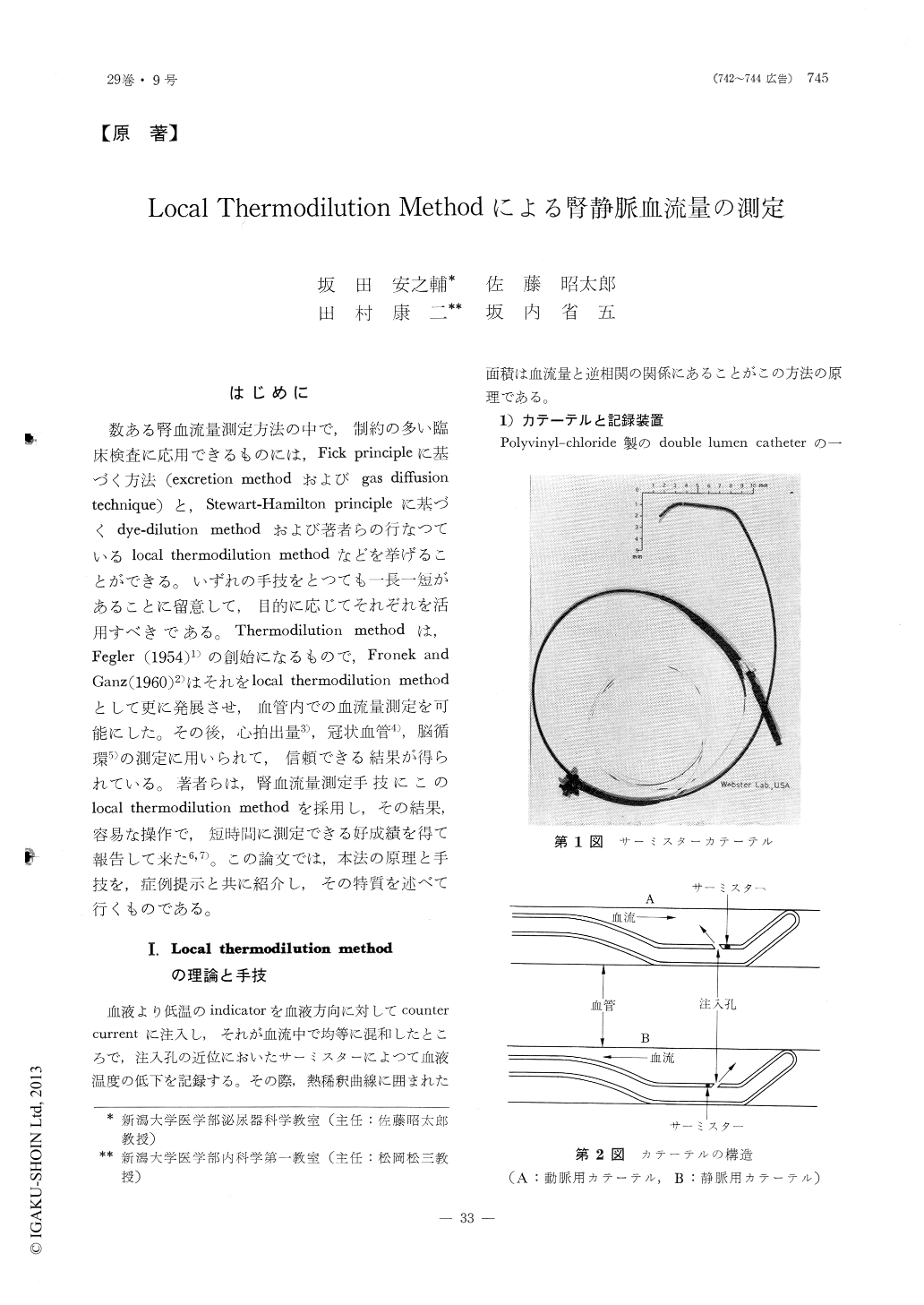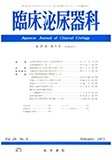Japanese
English
- 有料閲覧
- Abstract 文献概要
- 1ページ目 Look Inside
はじめに
数ある腎血流量測定方法の中で,制約の多い臨床検査に応用できるものには,Fick principleに基づく方法(excretion methodおよびgas diffusiontechnique)と,Stewart-Hamilton principleに基づくdye-dilution methodおよび著者らの行なつているlocal thermodilution methodなどを挙げることができる。いずれの手技をとつても一長一短があることに留意して,目的に応じてそれぞれを活用すべきである。Thermodilution methodは,Fegler(1954)1)の創始になるもので,Fronek andGanz(1960)2)はそれをlocal thcrmodilution methodとして更に発展させ,血管内での血流量測定を可能にした。その後,心拍出量3),冠状血管4),脳循環5)の測定に用いられて,信頼できる結果が得られている。著者らは,腎血流量測定手技にこのlocal thermodilution methodを採用し,その結果,容易な操作で,短時間に測定できる好成績を得て報告して来た6,7)。この論文では,本法の原理と手技を,症例提示と共に紹介し,その特質を述べて行くものである。
Local thermodilution method has been used to estimate blood circulation of the coronary, cardiac output volume and brain circulation obtaining reliable results. This method was used to estimate renal venous blood flow rate and the method and results were reported.
5 % glucose solution (at room temperature), used as indicator, was injected counter currently into the blood stream, through a renal venous catheter and thermodilution curve was automatically recorded by a thermocouple located proximal to the site of injection.

Copyright © 1975, Igaku-Shoin Ltd. All rights reserved.


